
Ever since I started blogging about real estate marketing, I’ve gotten into the habit of obsessively studying all property billboards, emails, and online ads that come my way.
So while the normal reaction to a real estate ad is a yawn – when I spot one, I get all chatty and excited about pressing issues such as the abuse of the word ‘luxury’ in property descriptions.
Now, the one thing I feel most strongly about, is how tragically often real estate companies commit an obvious sin in their real estate email marketing campaigns.
Wondering what I’m talking about? Take a look at some of the property mails that have recently landed in my inbox :-
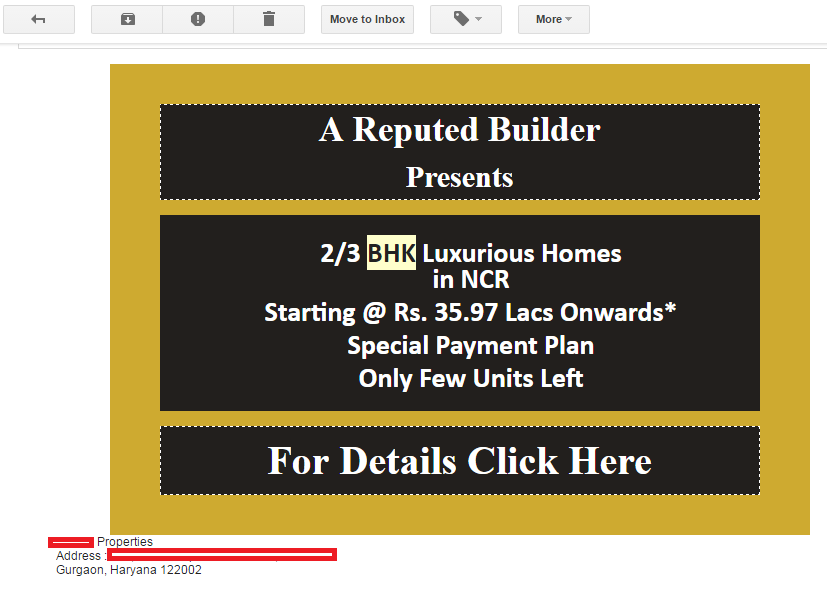
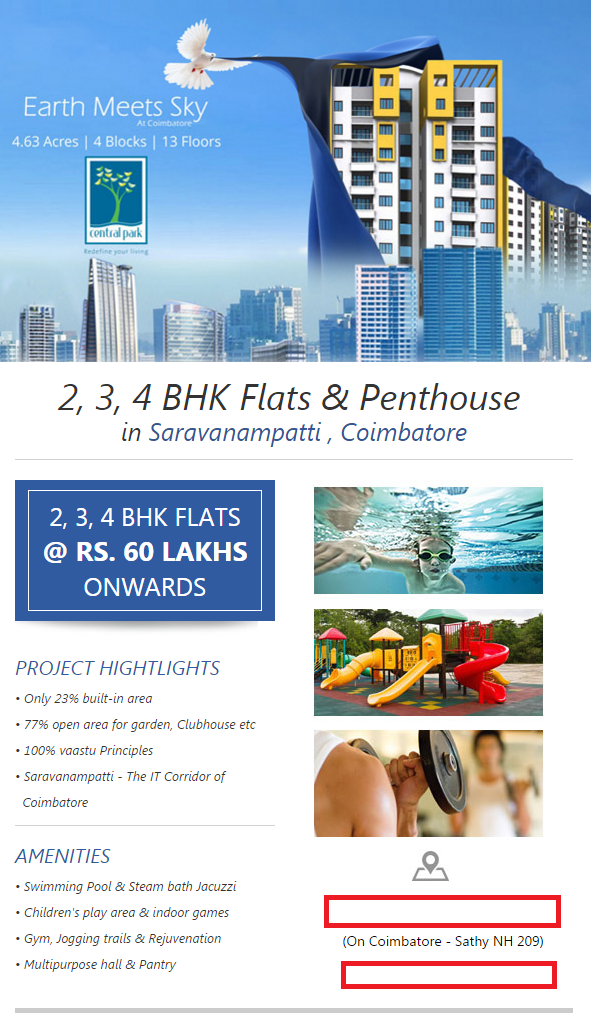
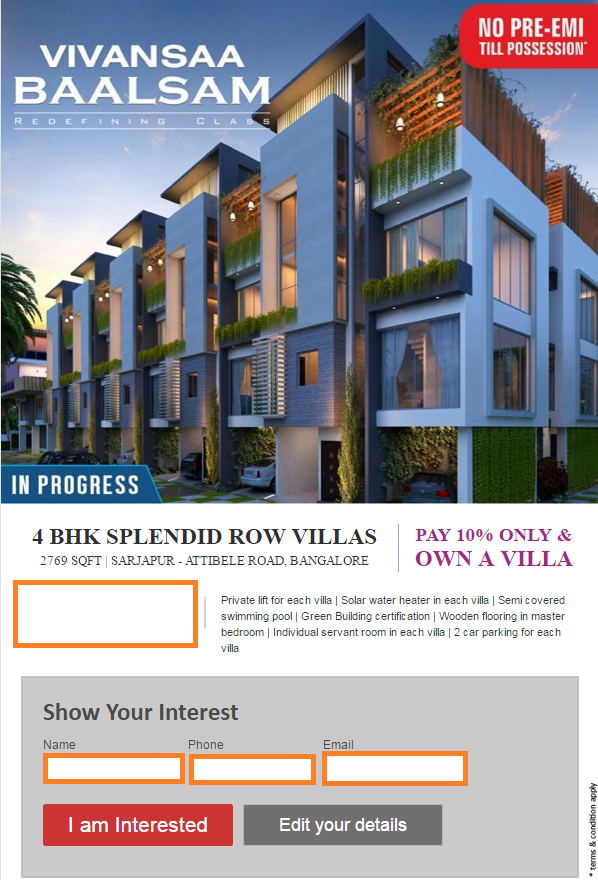
Q : What’s the one word that your mind screams as you scroll along these?
A : SPAM!
These emails have the S-word written all over them in big, bold and capital letters. They’re talking like ads – old-school, shot-in-the-dark, unsolicited ads that no one likes. They’re being impersonal in a very personal space (your inbox), and that’s their biggest mistake.
Imagine a sales person belting out ‘HURRY! GRAB OUR PROPERTY AT 20% OFF! ONLY 2 UNITS LEFT!’ the moment you open the door for him. I’m pretty sure you’ll bang the door shut the next moment!
This is exactly how you’re making your prospect feel when you land up in their inbox and scream ‘buy from me’ right away.
Instead, you can make your emails a lot more welcome and a lot less likely to die unopened in Spam, by personalizing them.
So if you’re planning to send an email like this :- 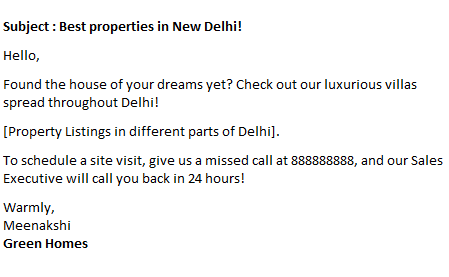
You can greatly improve it by personalizing it, like this:-
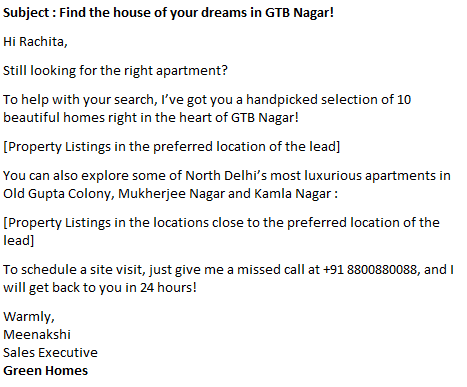
Here’s why the second email works better :-
![]() It greets the prospect by name
It greets the prospect by name
![]() It speaks to the prospect in first-person (that is, uses ‘I’ instead of ‘we’)
It speaks to the prospect in first-person (that is, uses ‘I’ instead of ‘we’)
![]() It uses words like ‘handpicked’ to sound like a 1-on-1 conversation instead of an announcement.
It uses words like ‘handpicked’ to sound like a 1-on-1 conversation instead of an announcement.
![]() It is customized to be relevant to the prospect (by showcasing property listings in the prospect’s preferred location within the city).
It is customized to be relevant to the prospect (by showcasing property listings in the prospect’s preferred location within the city).
![]() It goes an extra mile to help the prospect (by suggesting property listings in areas close to the prospect’s preferred location)
It goes an extra mile to help the prospect (by suggesting property listings in areas close to the prospect’s preferred location)
![]() It asks the prospect to reach out to the sender of the email for more assistance, instead of giving a faceless call-center number.
It asks the prospect to reach out to the sender of the email for more assistance, instead of giving a faceless call-center number.
A good salesperson is warm, friendly and helps prospects solve their problems using his product. A bad salesperson, on the other hand, delivers memorized lines about his product’s benefits at every opportunity.
Your email is nothing but an online salesperson – so make sure it’s a good one :-)








